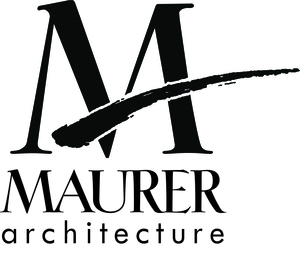We are pleased to be among the honorees of Capital Area Preservation's 2015 Anthemion Awards. Each year the awards are given in recognition of "outstanding dedication and commitment to excellence in historic preservation in Wake County."
Maurer Architecture was recognized for the following projects:
- 420 Cutler Street, Raleigh; Residential Rehabilitation
The Queen-Anne Colonial Revival house at 420 Cutler Street is located within the boundaries of both the Boylan Heights National Register Historic District and the Boylan Heights Local Historic District. Built in 1920, the house was constructed in one of Raleigh's earliest planned suburbs, serving as an ideal of early twentieth century, middle-class residential development. By the mid-twentieth century, as new suburbs were erected around the City of Raleigh, the house at 420 Cutler, like most houses in Boylan Heights, became a rental property as many large dwellings in the neighborhood were divided into apartments. Once again, Boylan Heights has returned to its roots as a strong middle-class neighborhood of homeowners and families, and the current owners are contributing to this renaissance.
- Fire Station No. 4, 505 Jefferson Street, Raleigh; Adaptive Reuse & Commercial Rehabilitation
At first glance, the brick building at 505 Jefferson Street appears to be a typical modest bungalow, one-story high with pyramidal roof, front porch, and stone retaining wall, closely resembling its neighbors on the street. The Raleigh Fire Department constructed this building in 1924 as Fire Station No. 4 to serve the expanding area north of downtown. It is currently located within the Glenwood-Brooklyn National Register Historic District, and played a significant role in the development of Raleigh's fire protection system. The one-story textured stretcher-bond brick fire house was constructed during a period of urbanization and development of the Glenwood suburb, reflecting a rapidly growing population in early twentieth century Raleigh. The station was designed and constructed to compliment the scale and character of the existing neighborhood, the small brick bungalow modeling the conservative, modest homes built for Glenwood's lower-middle and middle class inhabitants.
- 15 East Martin Street, Raleigh; Exterior Rehabilitation
The early twentieth century commercial building located at 15 E. Martin Street in downtown Raleigh has served the citizens of Raleigh for over a century. Built sometime between 1910 and 1914, it served as a drug store for the first half of the twentieth century. In 1925, it was the location of F. W. Parker Drug Co. Inc., and in 1935 it was the location of Dizor's Cut Rate Drugs. The building is located within the boundaries of both the Moore Square National Register Historic District and Moore Square Local Historic District.
- Martin Building, 111 West Hargett Street, Raleigh; Commercial Rehabilitation
The two-story brick-clad Art Moderne-inspired building known as the Martin Building on Hargett Street in Raleigh was constructed between 1950 and 1951 and is a contributing structure within the Fayetteville Street National Register Historic District. Martin's, a men's clothing store, occupied the building shortly after its construction, along with Tyson's Art and Gift Shop and Wells J. McSherry, jeweler. The plainly detailed building and other similar two-story commercial buildings built in the area during the mid-twentieth century reflect the growing interest, both nationally and locally, in Modernism, the new economic, social, and political environment of an emerging, fully industrialized world.
For a complete list of the 2015 Anthemion Award recipients: click here




